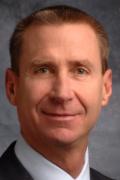Taking the reins and tending the cows at WebEx

As a direct result of rolling out web meeting capabilities across its entire organization in the past six months, Cisco has found that its travel and expense budget is down by almost a third. The statistic is an unexpected benefit of acquiring WebEx in a deal that closed last May, and will make a compelling story for its salespeople when they go calling on customers in the coming year. There's a new book out that may help them too, called Why buy the cow? — more on that below.

Yesterday, I met with Dennerline for an exclusive first media interview since taking up his new role [disclosure: WebEx is also a client — I hosted a series of webcasts last year on the topic of Work 2.0 and we're currently discussing plans for a follow-up series this year].
Dennerline outlined four main priorities that he sees for WebEx this year.
- Get Cisco's sales team selling the WebEx service
- Finish preparations for a production launch of WebEx Connect, the company's on-demand collaboration and composite applications platform
- Harness Cisco's partner channel to sell WebEx
- Tap Cisco's resources to bolster research and development of new WebEx services
I dug further into his plans for encouraging both Cisco's own sales team and its channel partners to sell WebEx. This may not be as easy as it sounds, since the services sell is different from the product pitches they're accustomed to — and, crucially, the revenue is spread out over a multi-year contract rather than coming all at once as soon as the deal is closed. How sales people are compensated can make a big difference to how seriously they'll promote the offering, as other on-demand providers have found to their cost.
At least Dennerline is well placed to work with the Cisco channel, having previously led the commercial division, which works with some 30,000 resellers in the SMB market. He said WebEx is currently testing four separate types of reseller arrangement, each with a different compensation model, to see which ones work best. Having already forged strong relationships with channel partners in his previous role, Dennerline is confident of getting frank and timely feedback on what works and what doesn't.
"... not only is [] software costly to buy, but it's far more costly to install, support and maintain, especially in a company with offices across the country and the world. With WebEx, companies discovered that they could pay a much smaller amount — in fact, they could pay for just the service they received — rather than making a huge upfront investment on a costly system hosted internally, and praying for downstream return on investment.
"In other words, they were able to have milk whenever they wanted it, without having to buy a cow!"
Why buy the cow? celebrates the effect of SaaS and Web 2.0 on the way people work, with contributions from the likes of The End of Software author Timothy Chou, SaaS CEOs including NetSuite's Zach Nelson and RightNow's Greg Gianforte, and consultant Dr Cindy Gordon and colleagues at consultancy Helix Commerce International. As befits a book about Web-based collaborative work and applications, Why buy the cow? is the product of multiple contributors and editors who collaborated using a wiki supplemented by numerous Web meetings. It's even published on-demand, using the services of very successful Web-based print-on-demand provider lulu.com.
As a side-effect, it casts Dennerline in the role of chief cowhand at WebEx. It remains to be seen how much milk he can generate from his new herd.